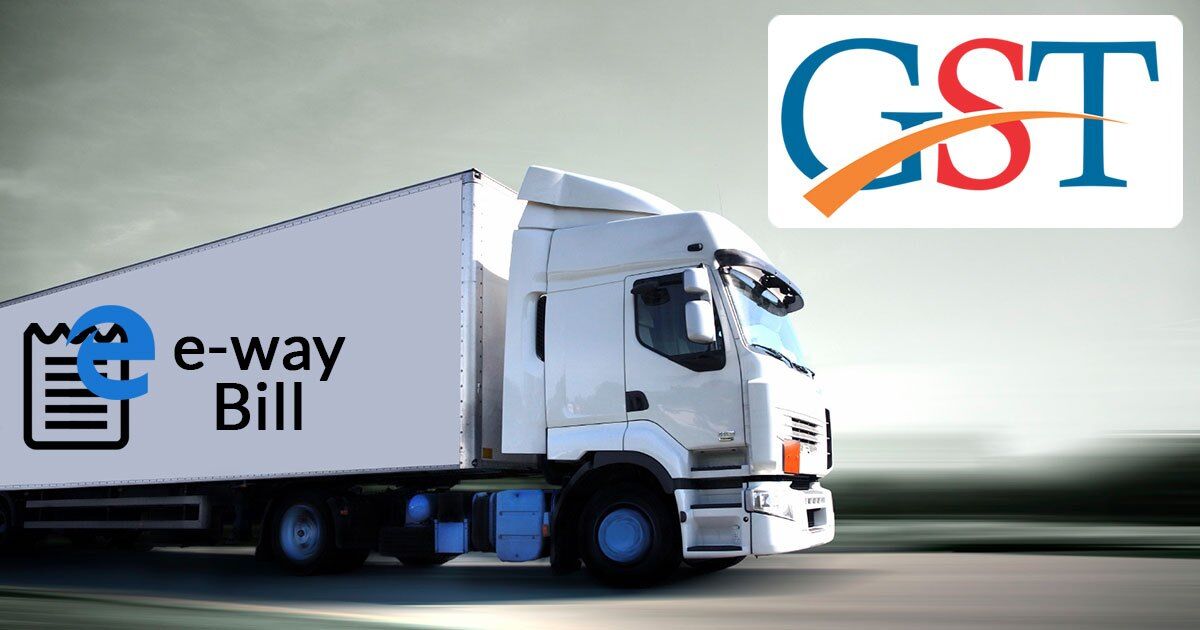
E-Way Bill System: E-Way Bill Becomes Mandatory for Movement of Goods : GST
E-Way Bill System: E-Way Bill Becomes Mandatory : GST
In a bid to bring uniformity across the states for seamless inter-state movement of goods, the government is set to implement the electronic way bill or e-way bill system from February 1. E-way bill is a system generated bill which every transporters, exceptions in some cases, will have to carry to move the goods from one place to another. These electronic bills can be generated from the GSTN portal. The e-way bill system was introduced under the Goods and Services Tax , but couldn’t be implemented earlier as the required IT infrastructure wasn’t in place. Last month, the GST Council decided to implement the e-way bill mechanism throughout the country from February 1.
In a notification released earlier this month, the GSTN informed the transporters that E-way bill would become mandatory for inter-state movements of goods from February 1, 2018. It further said that the nationwide e-way bill system would be ready to be rolled out on a trial basis by January 16
We know, there might be many questions arising in your mind regarding E-Way Bill System, so here we have answered all major questions. If you still feel your query is not answered, then feel free to comment them down.
FAQs
Q-1> Who needs to generate E-way Bill ?
Ans.: The following people are responsible to generate E-Way Bill
Ist – The Supplier
IInd – The Receiver
IIIrd – the registered person if purchase or sale is done from an un-registered person/dealer
Q-2> What type of supply is covered under E-Way Bill ?
Ans.: Almost all type of movements of goods are covered under E-Way Bill, including rejection, sales return , repair and maintenance and daily job work or material sent with a delivery challan. Approx value will be shown on delivery challan of the job work and an E-way Bill will be generated for this Challan.
Q-3> What amount is covered under E-Way Bill ?
Ans.: The material value up to Rs. 50000/= is not cover under E-way Bill whereas, if the total value of material which is loaded in a single vehicle is more than 50000/=, E-way bill will be generated by the transporter.
Q-4> How Many parts are there in E-way Bill ?
Ans.: There are 2 parts of E-way bill, part A and B. in part A ,we fill the detail of goods received , items detail and value of goods. In part B, there is a column of transporter detail ,means transport name, vehicle number and GR number.
Q-5> Is part B of E-Way Bill Mandatory to fill?
Ans.: If the material dispatch range is less than 10 Km i.e. through hand or by rickshaw, part B will not be required.
Q-6> How will goods be identified in Goods in E-way Bill?
Ans.: The Goods will be identified with an HSN Code shown in the E-way Bill.
Q-7> Any printout of E-way bill needed with the Invoice of Goods?
Ans.: No printout is required with the invoice of goods, show only number of E-way bill in front of invoice.
Q-8> What is Consolidated E-way Bill ?
Ans.: Consolidated E-way bill is generated when the transporter is carrying multiple consignments in a single vehicle. Consolidated E-Way allows the transporter to carry a single document, instead of a separate document for each consignment in a conveyance.
Q-9> What is the validity of E-way Bill?
Ans.: The validity of E-way Bill is as follows:
- 00 to 100 Km. : 01 Days
- 100 to 300 Km.: 03 Days
- 300 to 500 Km. : 05 Days
- 500 to 1000 Km. : 10 Days
- More than 10000 km.: 15 Days
Q-10> What is the penalty of non-filling of E-way Bill ?
Ans.: the penalty of non-filling of E-way Bill is 200% of GST value of invoice..
NOTE: there is no editing allowed in E-way bill after final submission.
Q11 > What are the documents required to generate E-Way Bill?
- Invoice/ Bill of Supply/ Challan related to the consignment of goods.
- Transport by road – Transporter ID or Vehicle number.
- Transport by rail, air, or ship – Transporter ID, Transport document number, and date on the document.